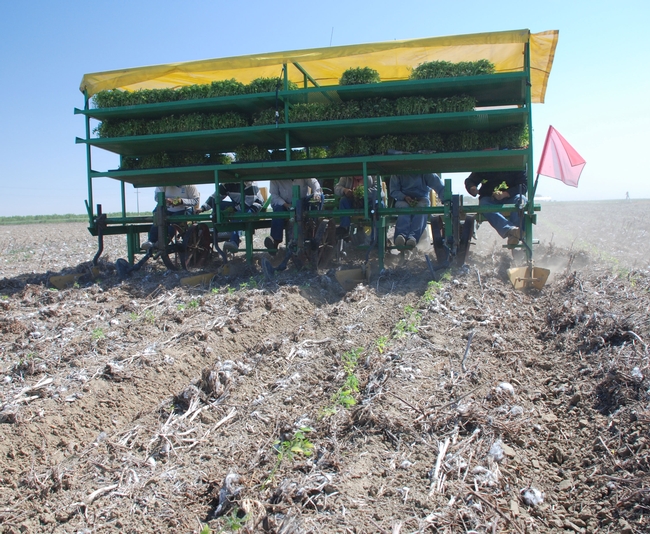From the UC Blogosphere...
UCCE featured in article about ag technology in Salinas Valley
A comprehensive rundown of Salinas Valley agricultural science published in the Salinas Californian prominently featured UC Cooperative Extension research and education.
Reporter D. L. Taylor opened the web version of the article with a 90-second video clip showing Richard Smith, UCCE advisor in Monterey County, in a spinach field talking about the amount of nitrogen the crop takes up.
Smith is conducting field trials on ways to more efficiently apply fertilizers, the article said. He is working with a product that works similar to time-release medicines that meters out nitrogen over an extended period. The system is expected to give plants the opportunity to absorb more nitrogen, permitting less to leach below the rootzone.
Krishnamurthy Subbarao, UCCE specialist based at the USDA Salinas station, is working with colleagues to find new lines of iceburg lettuce with resistance to verticillium wilt, the article said.
A new computer software tool developed by UCCE advisor Michael Cahn and his colleagues, called CropManage, helps growers figure out how much fertilizer and water to use and when on a field-by-field basis.

CropManage, a software tool developed by UC Cooperative Extension, can be used in the field with a tablet computer or smart phone.
Behold, the Gold!
When you visit the Häagen-Dazs Honey Bee Haven on Bee Biology Road, University of California, Davis, be sure...
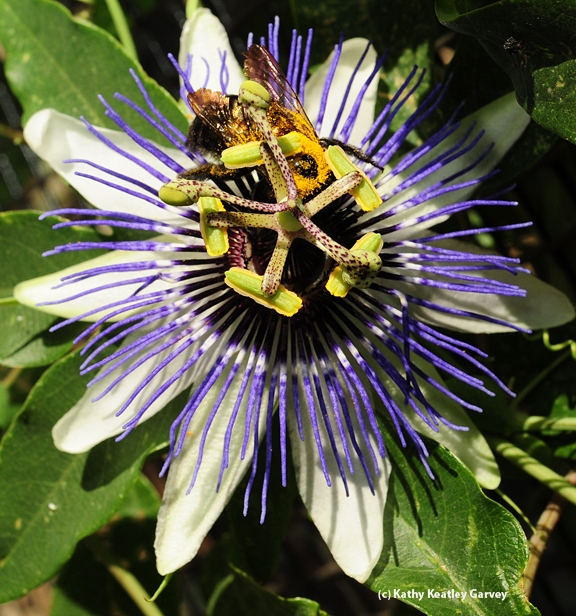
Valley carpenter bee foraging on a passion flower. (Photo by Kathy Keatley Garvey)
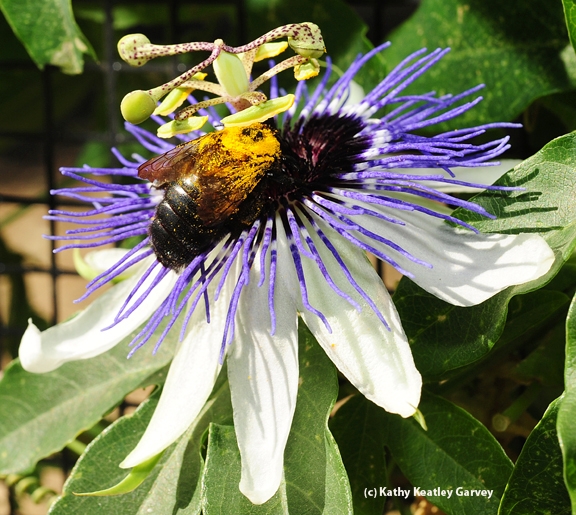
Note the golden pollen on the Valley carpenter bee. (Photo by Kathy Keatley Garvey)
'Thought for food' chews on conservation agriculture
Blogger Nathanael Johnson, who writes 'Thought for food' on the Grist website, recently contemplated the impacts of reduced soil tillage on the use of chemical herbicides and crops genetically engineered to tolerate herbicide applications.
He noted that the practice of tillage in farming does not mimic nature.
"Nature only rarely turns the land upside down — only during disasters," Johnson wrote. "This ecosystem (soil) responds to being turned upside-down the same way a rainforest would: It falls apart."
However, the author wondered whether the development of herbicide-tolerant crops has led farmers to adopt conservation tillage. For an answer, he turned to Jeff Mitchell, UC Cooperative Extension specialist in the Department of Plant Sciences at UC Davis.
“I’ve heard farmers here in California say that Roundup resistant crops effectively allowed some people to start doing conservation tillage,” Mitchell said. “But you have to remember, the vast majority of farmers in the U.S. using Roundup Ready seed don’t do conservation tillage.”
Garrison Sposito, professor in the Department of Environmental Science, Policy and Management at UC Berkeley, said genetically modified crops and herbicide use aren't required for conservation agriculture, but without them, yields go down.
"You never solve problems by making changes,” Sposito said. “What you do by making changes is exchange one set of problems for another set of problems.”
Have GMOs triggered conservation-minded agriculture? In the U.S., just a little bit, Johnson concluded.
Ultimate Swarms
It was blazing hot that summer day in Winters, Calif. The date: July 22, 2012. The place: a sunfiower field in Winters,...
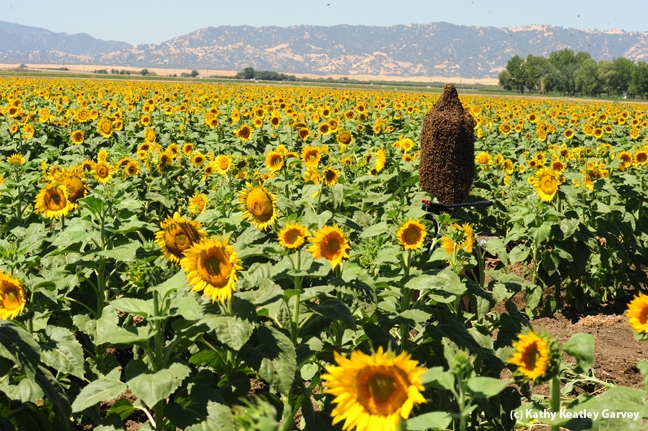
Norm Gary's bee cluster in the middle of a sunflower field in Winters. (Photo by Kathy Keatley Garvey)
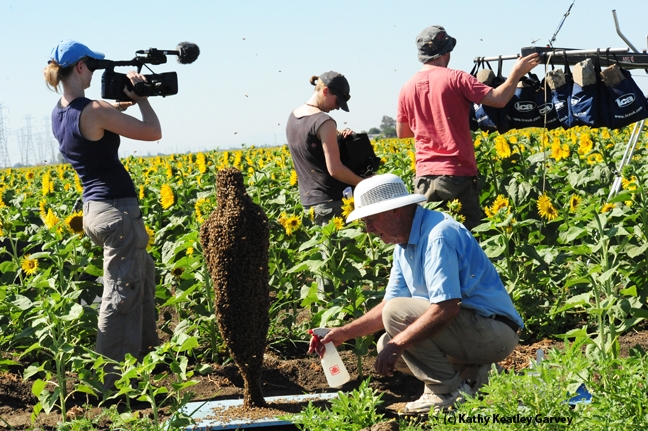
BBC crew sets up in a Winters' sunflower field, as Norm Gary sprays sugar water on his bee cluster. (Photo by Kathy Keatley Garvey)
Now That's Huge!
The world's largest hornet (Vespa mandarinia) is huge. Just how huge? We photographed a two-inch specimen last week...
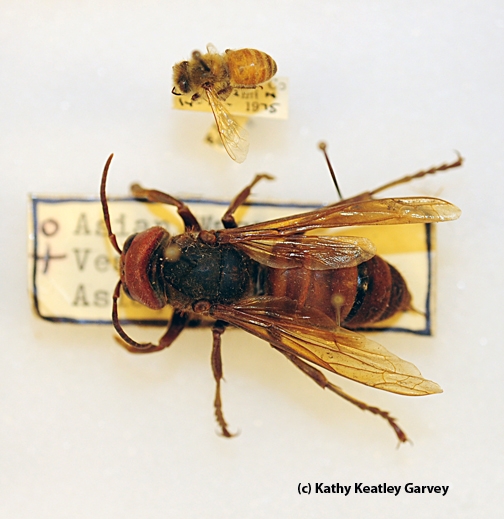
The world's largest hornet next to a honey bee. (Photo by Kathy Keatley Garvey)



